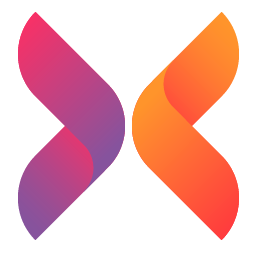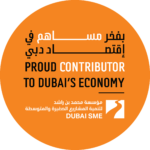
What does Blockchain technology mean?
The term (blockchain) and its unlimited uses have often come to our attention lately, and this is due to many reasons such as:
- Its high reliability.
- Difficulty adjusting its content.
- It is almost impossible to penetrate.
Blockchain is a real revolution in the world of financial trading, and it is a comprehensive technology that can be relied upon to create an integrated technological system like the Internet that we use.
We can say; blockchain is a database distributed across the network on a large number of computers, and when a record is sent to this base it becomes difficult to change.
To ensure that all copies of the database are compatible and identical, the network carries out continuous checks, and blockchain is used mainly for digital currencies, mostly Bitcoin.
How does blockchain work?
A group of records into blocks then into a chain.
Records are grouped together in blocks, and the record is any information that needs to be added to the database (such as a transaction), so these records’ blocks are added to the chain one by one, and here is the following example:
How to embed a deal into blockchain :
First; Registration of the business process :
Let’s take the example that Mr. A wants to sell two of his coins to Mr. B for $ 100.
The record of this transaction contains all its details, including the digital signature of both parties.
Second: Examination of the deal and obtaining confirmation :
The transaction is examined through the network, as the computers on the network called “nodes” verify all the details of the deal and make sure that it is valid.
Third: Adding the deal to the block :
The process of entering the records that have received approval for their validity begins with the block, where each block contains a unique special number called “hash”, and it also carries the number of the previous block within the chain.
Fourth: Adding to the series :
When the block announces that it is ready, a verification process is conducted to verify that the number of the previous block in it matches the real number of the previous block, and upon confirmation, it is added to the chain sequentially.
Why is blockchain content hacking difficult?
The unique numbers carried by each block guarantee the security of the block information, and the process of creating a special unique number for each block is mainly dependent on the content of the block and the content of the records within it by performing a mathematical operation that takes numerical information and generates a text string of letters and numbers, and changing the content is difficult for many reasons, including:
- Whatever the size of the original files, the process of creating a block number will always create a number of the same length.
- Any change in the original file will be completely offset by a change in the block number.
- Changing the block number breaks the chain because each block carries its number and the number of the previous chain, so the next block carries the old number of the modified block, and thus the next block number will be modified which will lead to the modification of the block number after the next.
Therefore; no hacker in the world will be able to perform all mathematical operations for all blocks, because it requires supercomputing capabilities and thus penetration will be impossible.
The importance of blockchain in the education process :
After the Bitcoin, revolution achieved by blockchain, attention began to turn towards this technology, which has proven successful, and there have been many attempts to exploit it in several areas, including the field of higher education.
Although blockchain technology has existed for 10 years, and despite the dependence of some economic fields on Bitcoin and other digital currencies, the higher education sector still finds it difficult to understand, exploit and employ it in raising the efficiency of the labor hand and under training individuals and training them to solve problems in the field of education.
Among the most prominent technologies used in this is blockchain technology, which many government educational institutions are preparing to start including within their field of work, as this tool contributes to the formation of a radical solution to many problems that may stand in the way of the education process.
Its importance is summarized as follows :
- Get rid of the paper documents that are stacked on the shelves, and facilitate the process of preserving the documents of educational institutions in a way that makes the possibility of forgery or loss less likely.
- Preserving the approved official certificates and protecting them from loss.
- Easy access to information if the owner permits the user to do so.
- Denying the suspicion of work managers regarding employees’ experience and their level of knowledge of job performance.
- Selecting people with experience and competencies with all transparency to fill the suitable positions for them.
- Maintaining the privacy of data and storing it for the applicant or its owner.
- Rationalize spending money, and further reduce the number of working hours.
- The ability to make some adjustments to undetectable secret transactions in educational institutions.
- Transparent filtering in the distribution of loans, grants, and projects, and achieving justice.
- Increasing the efficiency of financial accounting performance of all kinds.
The most prominent blockchain applications in the education sector :
Diploma and Certificates: Blockchain can be applied by presenting academic information to the student with its content represented by titles, diplomas, notes, and experiences.
It has the advantage of being highly protected, and it is the best way to ensure that no amendment is made to the certificates and diplomas obtained by the student.
Securing archived data: This is often required in virtual education, as documents in this type of education are exposed to theft or impersonation and changing information, so blockchain technology came to dispel any attempts to change data and information.
Documenting transactions: Blockchain plays a very important role in preserving transactions and their reliability, as it contributes to controlling economic transactions of various forms with e-learning institutions, verifying the credibility of the virtual educational institution, and avoiding falling into fraud.
Approval of certificates and credentials: Blockchain is an effective way to approve papers and certificates based on personal skills, and this comes on the sidelines of the implementation of a group of projects that later allow them to present credentials with the skills acquired by the student during group learning.
How is trust guaranteed in Blockchain?
Unlike traditional networks; Blockchain computers do not have any central computer, as it is a decentralized distributed network, and in such networks, no manager only adds trusted employees to his network, and trusting a computer needs other methods, given that a network like Bitcoin is a network that is open to everyone, and it has anonymous members There are no ways to know whether they are trustworthy, so the following are followed:
- Proof by action: To add a block to the chain, the nodes must prove that they were implemented through an increasingly difficult computer puzzle. This method called “mining” uses great computing power and here members get rewards for their work as Bitcoin digital currencies for example.
- Evidence through ownership share: where participants buy tokens that allow them to enter the network, and the more tokens they have, the greater their capabilities.
Uses of blockchain :
There are many useful uses for blockchain, and we can say that it is the best option in all the information or documents you have that you should not amend at all, and here are some examples:
- Cryptocurrencies: Blockchain is the basis for Bitcoin and other digital currencies.
- Healthcare: With blockchain technology, patients ‘medical history can be stored securely and under patients’ control.
- Voting: Blockchain can be used to conduct secure elections while ensuring that they are free from fraud.
- Ownership records: It is possible to save files on ownership of land, real estate, etc. This helps in establishing ownership in politically unstable areas.
The future blockchain summit is strongly present at GITEX Technology Week :
GITEX Technology Week is the largest technology fair in the Middle East, North Africa, and South Asia, and this exhibition, which is held in its 40th edition in 2020, has no equal in its size, type, energy, and vision, and it contributes to the following:
- Enabling bodies and organizations to reveal their new visions.
- Explore innovative ideas that may change the course of the game.
- Adopting smart technologies that help advance and succeed in the field of e-commerce, artificial intelligence, fifth-generation technology, cloud computing, hardware, and software.
GITEX Technology Week also features a range of related experiences, adding further inspiration to the mix.
It also includes industry-specific conferences, X-Labs to highlight the latest innovations and technical dialogues that are a series of discussions about current trends and future opportunities.
For the first time ever, exhibition participants will be able to experience 5 major tech shows that will take place together in December, namely:
- GITEX Technology Week
- GITEX Future Stars
- GISEC Cybersecurity
- Future Blockchain Summit.
- Marketing obsession.

